Art and Mental Health Link Love
A digest of this week's things I loved on Substack that I wanted to say a little bit more about ...
It’s tough to keep doing this work without support. If you believe in this work, please consider a paid subscription.
HOLIDAY SPECIAL: For every five new annual subscribers that sign up between now and December 31, 2023, I will immediately become an annual Subscriber to another Substacker, magnifying your impact throughout this community.
My niche is the relationship between art and mental health, with a focus on trying to understand how various mental health symptoms impact artistic process, productivity, medium, content, self-perception and reception by others. (And I believe that all of us are artists and all face mental health challenges to varying degrees.)
Each week, I share excerpts, links, and ideas related to this topic that are created by other Substack writers doing amazing work here. Learn more about why I do this in the way that I do it right here.
Reminder: I draw connections between what the writers are sharing and my understanding of how that relates to art + mental health but this doesn’t mean that the original writer intended that or agrees with it in full or part … I always encourage you to go read the full pieces whose snippets capture your attention here to find out what the writer’s piece intends and offers.
Grounding Us As We Begin
shared a piece a week ago called to be alone is not an option, and other rules for becoming moss
That I keep thinking about and returning to. There’s a lot of richness there. So many layers and nuances and goodness. Here’s what I want to share:
“invisible bravery means opening up, without resistance or embarrassment, and taking one another by the hand. it is the child of tenderness. it emerges in an invisible eruption when little voices let others brush against their hearts until they are simply raw with them. it is being willing to share oneself with others— in all of our precarious, divided bits, shrewd missing parts, incomplete shadows and misconfigured devices.
this is how we begin to re-shape the earth.”
I want to say thank you for being here each week with your words, and/or to read the words of others, to connect with each other’s hearts and shadows and joys and minds and all of our varied incomplete beautiful messiness. I am so glad that you are here.
And I have a second piece for grounding this week because so many creatives are REALLY busy at this time of year, so I loved this from:
You Will Never Be Organised Enough by of :
“But if you’re struggling to do it all with your small business right now, I hope this post lets you know that you’re not alone. There are so many of us out there, working hard, creating things we believe in. I don’t think the goal of our businesses should just be to make more money working less (although that would be nice!) Instead our goal should be to work at a sustainable pace, with a load that might be heavy at times, but is still manageable.
In so many ways, building a business is a lot like weaving a tapestry. Much of the work is invisible to people on the outside, and the work that is visible is painfully slow. The journey to the end involves a thousand tiny tasks and sometimes you look up at the loom and feel like you won’t ever get there. But somehow, you always do. The tapestry is finished at last and cut off the loom, and then the process starts again from the beginning.”
From the past week or so then …
What I Wrote This Week
Usually I share this at the end of these posts, but this week I was honored to be able to share the words of several great women through interviews and guest posts so I decided to put it up here front and center!! Please visit each of them and give them some Substack love!
Big gratitude to
, , and for these amazing words:Art and Mental Health Interview with Writer Lauren Holt
From Lauren’s website: “Throughout my life, I have devoted myself to a great many endeavors, but it was writing that taught me how to devote myself to anything. Storytelling is the root of my artistry, the first way I ever learned to make sense of the experiences that moved me, troubled me, or changed how I understand others.”
Art and Mental Health Interview with Tamzin of Resurface
Tamzin Merivale is an Irish artist, writer, and mentor. In creating her unique Soul Sign Energetic Portraits, Tamzin guides her clients through an immersive experience to unearth their powerful selves, their incomparable light and their strength, which she depicts in a portrait. Her mission is to hold space for diverse stories, to create greater empathy and understanding. She believes in “creating deeper connections — not only to others, but to parts of ourselves that have been forgotten, neglected, or are simply waiting to be discovered,” which, as you’ll see from the interview, is something that she believes is a core reason that us humans create art.
Art and Mental Health Interview with Writer / Artist Helen Conway
From her About Page: Encore is for anyone who is fascinated with the creative mind and who wants to see the process behind the art and writing. It is for anyone who wants to change their own life to bring their own creativity to the fore. It is for you if you believe that creativity is much more about the way we move through the world than the artefacts we sell.
Happiness is yellow: why neurodivergence can drive creativity - Guest Post by Allegra Chapman
Allegra explores the nature of happiness, the ways in which seasons and the cycles of nature affect human emotions, and “how we can use creativity to tune into our own emotional needs.” She shares weekly prompts for subscribers to use in our journaling / creative practice.
She shared in one of her posts:
As someone with ADHD and who has struggled with mental health challenges my whole life, my brain is a busy, noisy and very crowded place to be. So I wanted to talk a bit about what it means to create with a neurodivergent mind.
Mental Health and Creative Process
of shared As The Leaves Fall
Which, as per her usual, is filled with beautiful images and thoughts and I appreciated this:
“It’s usually so noisy inside my head but today it’s unusually quiet. I’m listening to the photos and asking them what they want to communicate. I often get caught up in the feeling I had when taking the photo and fail to notice the feeling of the now still image. Like the gull video above, sometimes they are very different!” …
“I have been caught up in wanting my stories to reflect the experience as close to the original as possible and wanting my photos to reflect that same “reality”. When I get “behind” on processing photos and videos I’m afraid I won't remember the story well enough to communicate it out to the world. Just now I’m realizing that’s ok! The photos and stories can take on new life when both they and I are ready.”
Sometimes our minds keep trying to insist on making our art a certain way for all kinds of reasons but when we are able to notice that this is happening, and that it’s fighting against what instinctually we might find ourselves doing in our creative process, we can choose to reframe it.
wrote The Messy Chambers of the (Creative) Heart
exploring a habit of writing absolutely beautiful sentences but not necessarily attending to the foundation of the writing, relying instead on a veneer of “perfection” …
“It has taken me a long time to un-remember how to write ‘perfectly.’
These days, what I’m most curious about is why I have been so invested in perfection.
Much of my avoidance of creative mess has been caused by fear of uncertainty—the not-knowing where my writing was going (in my mind uncertainty represented lack, or failure). It was also, perhaps, to do with resistance to feeling things were out of my control. I was wary of entering an emotional field that was unexpected, even subversive. I wanted to rein things in, keep it neat, keep it safe.”
I think here of control and our desire for controlling our emotions and our world and our lives through controlling our art. And I think also of aging and changing and how when I was younger I was so insecure about my own messiness that I definitely wanted to polish over it with beauty in various ways and add in some glitter to further distract from the mess. And now I have less to prove or maybe I just care less about proving anything I suppose and I can just sit in the mess and see what beauty comes through out of it and allow people to see all of that.
RELATED: of in Why I wrote this book
Shared some really helpful insights into what perfectionism is, that’s more than we sometimes think it is. And how it relates to procrastination. And this helpful tidbit:
“This fear of being rubbish at something new, of failing or getting it wrong, got in my way for a long time – until I looked at things differently.
What if I loosened my grip on the belief that I had to have a certain outcome and instead just experimented with having a go at this new thing? Without a specific expectation of the outcome there couldn’t be success or failure, it was just whatever happened, and so I couldn’t get it wrong.”
Mental Health and Creative Content
of wrote Zen and the Art of Listening
about composer Pauline Oliveros and her practice of deep listening and shared:
“She was also a pioneer of electronic music. She was part of some of the very earliest experimental electronic music labs. She invented instruments, she invented methods, she played with ensembles, she did many collaborations. At some point in the 1960s her heart became heavy with the political situations that were happening, and she decided to retreat for awhile. She retreated basically into a single note — for almost a year, she sang and played on her accordion only a single note, the note of A.”
There’s a lot more richness in the article about this creative that I didn’t know of before reading this piece but that section really stood out to me because of the power of just reducing down to something simple in your art practice and repeating it until something new emerges through the pain/mess/block/hardness.
of led me to an interview with Gitte Maria Möller who says:
“My compositions for my digital collages — or my paintings and drawings, which are based on those collages — usually start with a single character or structure like a fence, wall or frame. I then start populating the picture plane depending on what characters and symbols I envision in the space. I have a lot of reference images I work with, so it can be trial and error and feeling out what is right, but often something will stick with me and I’ll keep using it until its magic wanes or my obsession decreases and I have to move onto something else.
My work is a collage of high/low, ranging from pop culture icons and images from my childhood and teens, to things I see around the city on walks or through searching online, but then I also reference images and themes from art history. In an abstract but methodical way I use my work as a way to think through feelings and relationships — in relation to myself and the world around me — so the symbols and characters in the work are really stand-ins for these dynamics.”
I find myself mesmerized by this idea that the symbols and characters in an abstract work stand in for the entire process of working through feelings and relationships.
Mental Health and Creative Productivity
of shared Stitching myself together
“One thing I can’t do if I’m unwell is knit. It’s my main creative hobby and I miss it if I can’t do it. Lots of people talk about their crafts as a way of coping with stress and a means of relaxation. If I’m in anxiety mode I simply have no patience or concentration for knitting, and it just becomes an exercise in frustration. One of the signals that I’m managing things well is if I can knit for reasonable periods and complete projects.”
It’s frustrating when our mental health symptoms interrupt our creativity in this way … but it is also great when we know this about ourselves because sometimes it’s hard to realize that you are really struggling and when you can identify these clues (oh, I’m not knitting again) then you can see more easily that perhaps something needs to shift. At least that’s sometimes been the case for me.
of shared Writing?
Which has so many insights into the world and mind of a writer. In particular, I loved a section which quotes Thich Nhat Hanh, relates the quote to writing, and then says:
“So why can’t the writing be enough, dammit? Why is it so much harder than walking or breathing, Thich?
“Enough” is a word that comes up all the time as a writer. Usually like this: “I am not writing enough.” There are times, of course, when I also worry about doing enough walking, breathing, or every other stupid thing—”Do I need get closer to that 10,000 step goal?” ”Am I somehow… not breathing enough?”
But for my entire adult life I have not been writing “enough,” even when I am spending plenty of time—enough time—actually sitting down to write. And even if I’m getting enough written, what I am writing is not enough. That’s how brutal the experience of enoughness is.
Why is this?”
Sometimes mental health/stressors/life itself reduce our creative productivity … but what if the amount that we are creating in this moment is exactly enough - always?
RELATED: From of in An Ode to Unproductivity:
“But moment by moment, I was worried I wasn’t doing enough. I finished the first full shitty draft of my book on the second day, and that alone was enough! But I went into the experience wanting to master it, to be the best resident who ever residencied. To crush it.
Turns out, I also needed to sleep. It was so dark so early in the Catskill mountains that I was basically in bed by 8:30pm every night. (Bliss.) I sometimes didn’t get out of bed until 8:30am the next morning. Some days I did a few hours of work and then went outside or read a (non-research) book or, like, looked at Instagram. And I beat myself up about this! I wasn’t doing it right! I was wasting this time!
But I wasn’t. I was doing just what I needed to be doing.”
Mental Health and Creative Identity/Self-Perception
of wrote Don’t Judge My By My Journals
which has so much goodness in it about the process and purpose of journaling and also includes a bit about some of the complexity of reviewing your old journals:
“If you keep journals and have ever returned to them, you probably have an idea of what I am talking about. For every piece of gold I find, I find a lot of other stuff. Cranky, small, selfish parts of myself that I would rather not return to. Hard, sad moments I’d rather replace with thoughts of palm trees. And a fair amount of just plain boring stuff that even I don’t want to read.
You know the long skinny mirror that is designed to make you look good. Most of us have one in our house somewhere for moments when we need it. My journal is no skinny mirror. It is the hotel mirror, the one lit by fluorescent light that makes you look older and more tired than you are, the one that makes you ask, “Do I really look like this?” Going through my journals is like standing before that mirror naked. I consider myself to be body positive, but this is a lot, even for me.”
of shared “The Year of More” didn’t work (in 2023)
About an intended project and how it went awry and how that made her feel and what she’s learned from it:
“When I fail at something, it can trigger a spiral of concerns that I am incapable or unreliable—and/or that’s how people will view me. That started to come up for me this fall, when I decided to not bother with the experiment any further. Thankfully, I was able to get out of that spiral rather quickly, because I have a wealth of history I can pull from to prove that’s not true.”
It’s so easy to go into those shame spirals. And I find it really helps a lot of if we have evidence to the contrary to show ourselves, which is why I often recommend creating a “brag book” of things from your life that you’re truly proud of. These may be big awards but most likely they are little things like a sticky note from someone whose life you touched or a line from a piece of writing you did that you are really proud came out of your own mind or a list of the accomplishments within one certain project.
RELATED: From of in Well, this is a mess:
“This didn’t turn out how I wanted, but sometimes there is an art in realizing we are allowed to be seen failing.”
Mental Health and Creative Business
of shared The Mess of a Creative Space
exploring how and why so many of us have self-judgment about how messy and clean our studios or other creative spaces are, related to a variety of internalized messages and exacerbated, of course, by the curated inspiration we have followed, whether on social media or via magazines. Just a few of the smart lines in this piece:
“It's a false binary to say “artists are messy” or to assume that those with well-organized and cleaned studios somehow aren’t doing creative work. We all come to our creative practice in our own way. A societally-induced value judgement on “clean” vs. “messy” has however lodged itself deep within us.”
“Just like making our art can be impacted and altered based on how it’s perceived, or how we want it to be perceived (which I touched on briefly a couple of weeks ago), so too can our spaces. Despite our best intentions to embrace who we are and how we work, it’s really difficult to distance ourselves from these larger societal expectations and demands that keep lurking in the corners of our studios.”
“Our creative spaces are spaces full of life. They are where ideas thrive and where creative energy can flourish. It doesn’t matter whether you need a clean and tidy space or a more wild and chaotic one in order to facilitate that.
What matters is that it’s a space that you have a connection to. That your objects, books, materials, and art aren’t planted there because you think they portray the life of a creative person but because you know and feel that they make you a creative person. What matters is that it’s a space where even in the tiniest bit of square footage, the tiniest corner of a kitchen table, you feel safe and supported to explore all of your ideas. A space where judgement does not live.”
Do you judge yourself as an artist for having a space that’s “too messy” or “too clean”?
of shared What do you need to remember?
and touched on this aspect of how sometimes we need to focus on our own mental health and wellness even if it means that we can’t be public for a time and therefore might not gain/maintain our “following” that’s seemed to become so critical to any kind of creative business traction:
“I’ve realized this year especially, after being almost constantly visible for years prior, that taking the time I need for myself and my well-being is worth what I lose by doing so — whether it's followers or speed of growth or opportunities. I've “lost” subscribers, popularity, and rapid-paced growth this year because I've needed to step away and care for myself in deep ways; I've let go of the momentum I had in order to make space to heal. What I've gained by doing so matters so much more than what I've “lost”, and will ultimately support longevity. Reminding myself of these things over and over in a world obsessed with constant and nonstop visibility. Sometimes, taking space away from the work is the most meaningful work.”
Lisa’s newsletter is how I found Substack in the first place, how I first fell in love with it week after week through her messages in my inbox alone, how I first decided to come see what it was all about. If you’re not subscribing to her work, you might want to.
RELATED: From of in Thank you for creating this community
“Craving escape and visibility simultaneously can be a difficult balance for a creative, who must experience deep solitude but who must also share themselves and their work with the world.”
How Art Heals
of shared Make The Little Miracles, explaining:
“Recently I was explaining Attentive Art to someone (A mix of creative exercises, solution focused therapy and creative visualisation) and told them how it can transport you to the place where you have already achieved everything you want to. Then you work backwards, see how you got there and then do those things. You feel good to be in that place. This sends a message to your subconscious mind. The subconscious loves repetition and over time it starts to believe that the place where you have achieved your goal is real and it will help you to get there. This is one of the reasons why I call Attentive Art ‘The Art of Feeling Better’.”
Sophie offers Attentive Art sessions and has some spots available before the end of the year.
From of in Pathway to Truth
“Your narrative has the power to mend, to resonate with a heart or a soul wandering in search of meaning. It can weave connections within communities far and wide.
Your voice, art, and vision can spark a deep and contagious joy.
Remember, our lives are often mirrors for one another. When we are mindful and intentional, we can reflect [back] the vast possibilities of freedoms some folks may not have envisioned for their life yet. Living authentically and leading with our truth makes us catalysts of change, healing, and growth.”
I can say it no better than that!
From of in Valuing your creativity:
“It came as no surprise to discover that my top love language was words of affirmation.
As a child, I learned that words had value and power, and that I was (mostly) good at using them. As a writer, words are what I offer to readers, both in a fictional form through novels and short stories, and in a personal way, through observations of fleeting moments (of wonder, joy, life) and reflections of how they touched my heart. Or through the wonderings and ramblings that rise with the awakening (and reawakening) of creativity.”
What’s your love language?
When Art Harms/ Hinders/ Is Complicated
of shared An Impromptu Interview
And wrote about Sam:
“As a young boy it started with ADHD medication, then he began abusing Ritalin, then in community college he turned to Adderall and finally Dexedrine. All of these drugs seemed to help him focus and advance his art tremendously.
Initially Sam’s work consisted of very intricate pen drawings until a friend asked him to paint the side of his truck. Sam admitted to not knowing how to paint, but offered to try it anyway. He fell in love with it. But it wasn’t long before Sam’s drug use caught up to him. In college he had turned to speed, excessive amounts of speed. Sam believes this is what led to his first mental break and resulting schizophrenia diagnosis.
Sam admits it hasn’t been an easy road, something I can certainly relate to. He always thought that he needed the drugs to produce good work. For years he struggled with his mental illness and put his art aside.”
Complicated. Mental health symptoms lead to medications which improve focus and enhance creative output but then become problematic and stopping the medication makes one feel like they can’t create … and eventually they figure out that they can, maybe … this stuff is complicated. And this is the complex interaction between art and mental health that interests me - because the more we can dig into it, the more we might be able to make meaning out of all of it.
Julie Cloutier of Clayfulness wrote Regret & Satisfaction
which explores the truth of how challenging a creative small business can get at this time of year, when many makers make the most of their money because of holiday sales.
“October was a pressure month and I’ve felt like a machine. Automating my work, repeating tasks. My right shoulder was sore for a week after attaching handles non-stop for 3 days. Even though I generally make the same quantity of ceramic wares year round, the selling part is more compressed and I roughly make half of my yearly income in 3 months which is amazing and scary! It’s a lot of eggs in one basket. If I could choose otherwise, I would.”
Makers may often feel complex feelings at this time of year. We are grateful for the sales that come from doing the work that we love. We are inspired by the community around us who wants to purchase what we make to give to others as gifts because that is really special. We are also tired and may feel conflicted about consumerism and so many other things. It’s complicated. And Julie’s post captures that in a variety of ways.
Art in Community
of shared So Much All At Once
about a lot of life stuff she’s going through, some of which resonated with me, but also about time spent in the company of other writers:
“The week was a blast of teaching a class full of creative and kind writers, and then playing with my writer friends in the afternoons and evenings. We swam in the ocean, sat in the hotel’s hot tub, perused nearby shops, swam again, walked, all the while talking about writing and publishing and relationships and family, the things writers love to discuss. I was again reminded of how lonely a life of writing and editing can be, and I could feel myself return to myself in the presence of so many friends.”
Many of the creatives I know find it important to balance a lot of solitude with these times when they’re either creating in community or simply thriving in a community with other creatives. It nourishes the soul and that sustains the creative work.
RELATED: From in the introduction of her interview series Sundays are for Mothers
because sometimes where we find community is through other people’s stories about creative living:
“As a mother, and as a woman devoted to not only my creative process, but also exploring different avenues for my creativity, intuition, business ideas over the years - some privately, some publicly, some for arts sake, some as income streams… I’ve learned that the road can feel lonely.
Not always lonely as in physically alone - though of course that can happen too… (sort of? With kids buzzing in and out)… But alone in the sense of feeling like it’s a mystery how any other mother does it. I’ve felt, many times, that I so badly just wanted just a peak behind the curtains of other creatives, who were somehow moving between children, a creative project/ their business/ clients, the home, to their lover, into their community…”
The Power of Experiencing Art
wrote a piece for by about Possession by A.S. Byatt
which is a beautiful tribute to the recently-passed author and a celebration of how a book can be a friend time and time again throughout the years
“Above all, Possession greets me as an old friend, and it reminds me of difficult times in my life, but each time I return to it I find it says something profound and new about the richness of the written word, and about the sheer joy of reading, and how a great writer can inspire one to read, and read more, and to read again, and again.”
Do you re-read books? We’ve discussed this a few times here but I’m always interested in everyone’s answers. If you do, do you have special ones that are friends throughout the years?
Samantha Clark of wrote Art that holds time as a vase holds water:
about viewing a variety of different museum art and when writing about one piece shared:
“Part of what drew me to this work is the sheer density of time it holds, the thousands and thousands of hours of painstaking work contained in its making. Somehow that gives this work a kind of presence. It's as if it inhabits time differently and invites us to do the same.
Art can hold time, slow time down, allowing a moment to dilate with meaning and connections, and as we experience this we come to realise that each single moment doesn't just have duration, it also has the potential for depth, for amplitude, for layers and ramifications.”
She discusses Slow Art, which I love because I’ve written and thought a lot about Slow Yarn/ Slow Craft. What I love about this particular passage is that it puts a new twist on it for me, because I always think about the slowness in the making of art, but there can also be a slowness in the viewing of art.
of shared The Greatest Gift I Ever Received
and although she is discussing travel here, I think we also often have this when we experience the world through art as well:
“To see the way another person lives, what their life is like on the inside- walking the same streets, eating the same food, speaking the same language- is an expression of the love of God for me. Not only observing, but asking to understand because understanding brings compassion, love. Understanding builds bridges and illuminates shared experience. Seeing the different ways the Earth was built; watching the colors the sun reflects on mountains in the west, then mountains in the east; feeling the presence of the people of the land; it all reveals something new we didn’t know before and maybe we are even a little better for it.”
of asked What Are Your Thoughts on BIG MAGIC by Elizabeth Gilbert
and shared:
“Big Magic is seen as the wonder-book for the creative and has been raved about since its publication in 2015.
I’ve had my copy for several years but struggled to read it for a while. The problem was it seemed to make so much sense, I felt so seen that a huge wave of overwhelm would overcome me as I read and my heart would race. Looking back I think this was because there was so much noise in my head I just couldn’t cope with the possibilities this book could open up for me.”
And while this wasn’t true for me with that book, which I loved and devoured quickly and then quickly a second time, I can relate to the feeling of when a piece of art or writing is so powerful that you aren’t ready for it at a given time and have to pause and not take it in but then return to it when the time is right.
Short Shares
A few more poignant passages that I felt moved to share:
From November Studies by
which inspired me to pause and think about what November means for me
“The sky tonight, Saturday—peak of the Leonids—boasts a clear slate of heaven. I’m outside on my balcony, watching a cloud dragon dance along the horizon: body of a creature, face of a man. Its profile parts the sky—airplanes crest its nose, stars freckle its rear. The noise of the TV inside can be heard through the windowpanes. I like being outside in this private space at night, hidden by shadow, watching the world. I observe the cloud’s parade until it blurs, obliterates, a solid picture morphing into obscurity. As it does this, I’m dreaming up sentences, descriptions, approximating how long it takes for an image to dissolve into nothing. I thought about running inside to grab my phone, take a picture. To share with someone else this incredible image, knowing that once the cloud broke, it would be gone forever. But November is a month of transit. An interlude. We’re suspended, like the cloud, in a state of passing. Of anticipation. We’re here, in November, then gone.”
From of in Grey the Great:
“This morning is made of the greyest of clouds. Blue-grey, brown-grey, green-grey. Snow clouds. It feels a million miles from the flowery front porch enjoyed this summer, but that doesn’t mean these clouds are “dark” or “sad.” Humans imbue these colors with meaning. Grey gets the short end of the stick. Grey is a redhead’s best friend, the best color for horses and chickens, and the best color for a sky to think under; it is the opposite of depressing. I can see how seasonal depression has made grey the bad guy but it doesn’t deserve it.”
From of who shared a very moving poem in The whole universe came visiting along with these thoughts:
“This poem came out of…I don’t know where or why? I only know when. Does it ever happen to you when you wake up, step outside and sit with a cup of something warm and in those moments the breeze and the sun and the air all conspire to arrive in just the right resonance of touch and temperature and song, and you feel like the whole world is with you?”
From of in On Companionship
“Donna Haraway writes about companion species. She had a whole manifesto about it in the 2000s and has written at least two more books on the topic since. While all theory is problematic in one way or another, what I love is the way she uses the term companion. Her emphasis here isn’t on an animal being an accessory or something owned, but a sense of companionship, an intertwining of lives that is deeper.
Companionship can be a deeply meaningful term, if you think about those that you choose to keep company with. Friends, family, dogs, cat, horses, ferrets, etc. To be a true companion of any of these people or animals, you must care about their lives and their deaths. Her argument is that ALL of these relationships matter, not just the human-to-human ones.”
of wrote in A 10-step Holiday Embodiment Guide:
“Hold grief rituals for a heavy world and a heavy heart: it’s important to hold space for grief during the holidays. For those who have lost loved ones, it’s a time to manage the joy and the pain, to lean into the nostalgia while also dealing with reality. Take time for grief. Mourn for a world that is hurting and broken, where war and genocide still exist. Light a candle daily, noticing the grief and the gratitude that often coincide.”
From of in How Do You Know if Your Writing Is Any Good?
on why AI isn’t something writers must compete with:
“Only I can write about how I'm coping my husband’s injury. ChatGPT might be able to bang out an article about how to write a book, or how to overcome procrastination, but it can't write with the honesty I can about something awful happening to your spouse and how it affects you both. That story is unique to me. Even someone else, in a similar situation will have a different story than mine.”
Sci-Friday
You can visit goatfury to find out more about Sci-Friday and see who else is participating.
Since I’m publishing on Saturday this week and it’s been a busy holiday week, I’ll just link to some related things I liked:
- wrote about Transhumanism in Metal fingers in my body
- of wrote in Fast Days, Owls Company about the scene in Star Wars that scared him most as a child
- of wrote in The Cosmic Comedy Collection: “Humor is not bound by time, space, or genre.”
Hannah of
shared about a book called The Gone World: “The book follows Shannon Moss with the Naval Criminal Investigative Service as she attempts to solve a murder in 1977, using time travel to visit possible futures and find out what happened.”
A Few Thanks
Thanks to
of for sharing my work and book, Crochet Saved My Life, in Imaginary Ladies (which also has some beautiful embroidery!!!)Thanks to
of for sharing my post about Mental Health Reasons I May Not Read Your Writing …. and please write it anyway! I’m glad when this one resonates. <3Thanks to
of who mentioned me in New Ways to Share Stories
Housekeeping:
Create Me Free exists because of paid subscriptions. Read what that means here.
On a really tight budget? Learn about my Pay What You Can option here.
Want to share your own responses to questions about the relationship between art and mental health? You can answer a visual interview here or answer in words here.
I’ve created my Table of Contents where you can see all of my post types and the posts available in each one.
I’ve made it so that you can opt out of the types of posts here that you don’t want email notifications for. Learn more here.

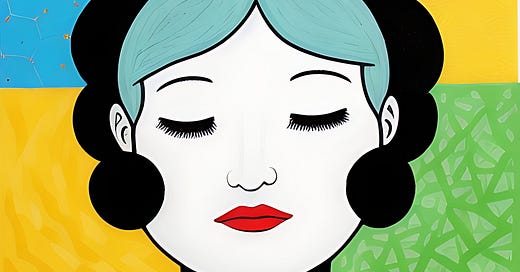




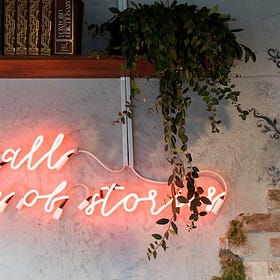
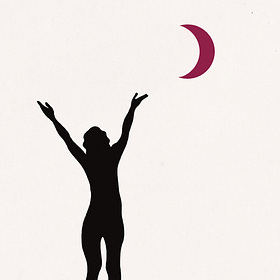
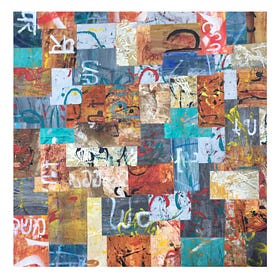
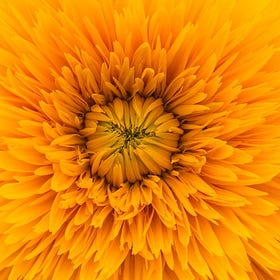

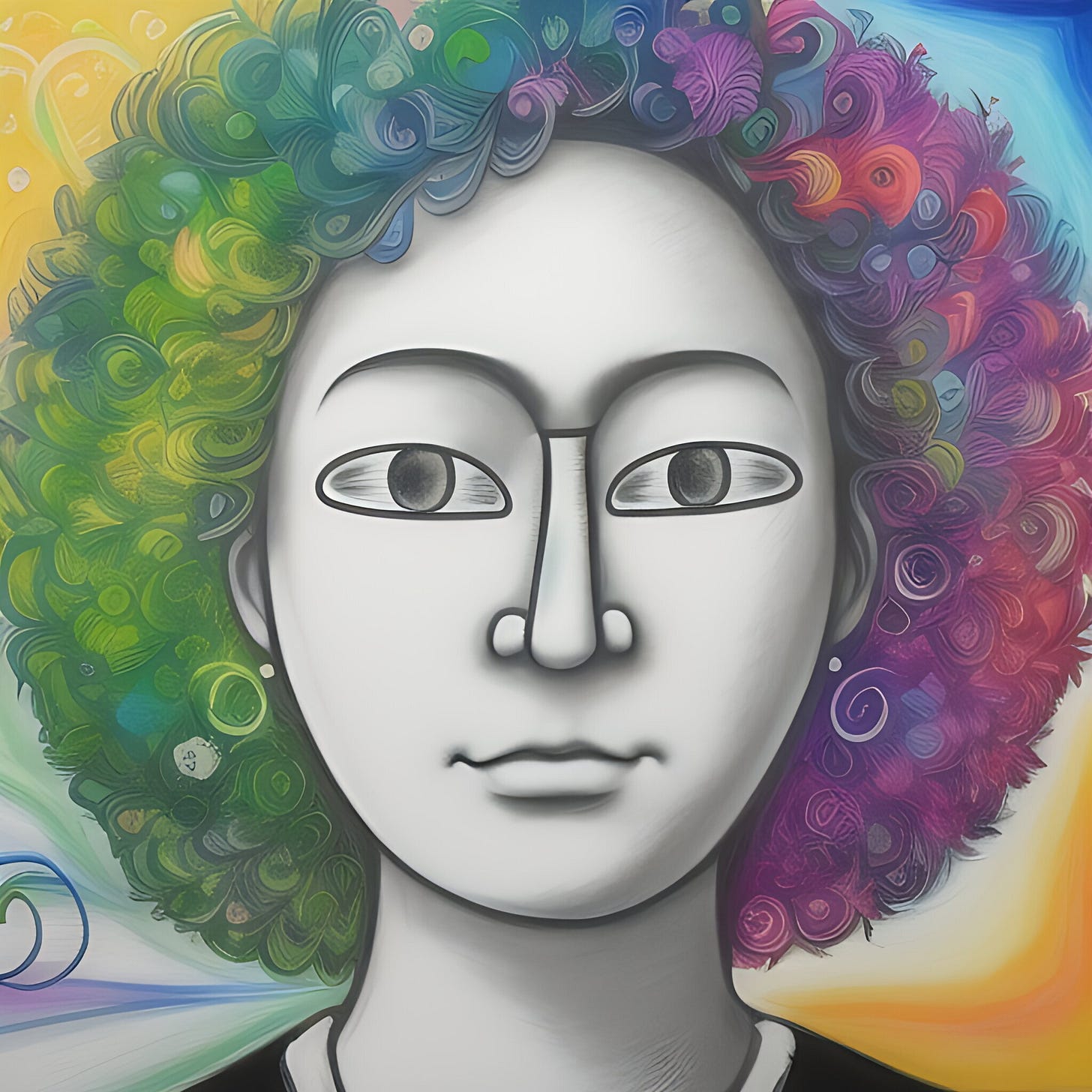
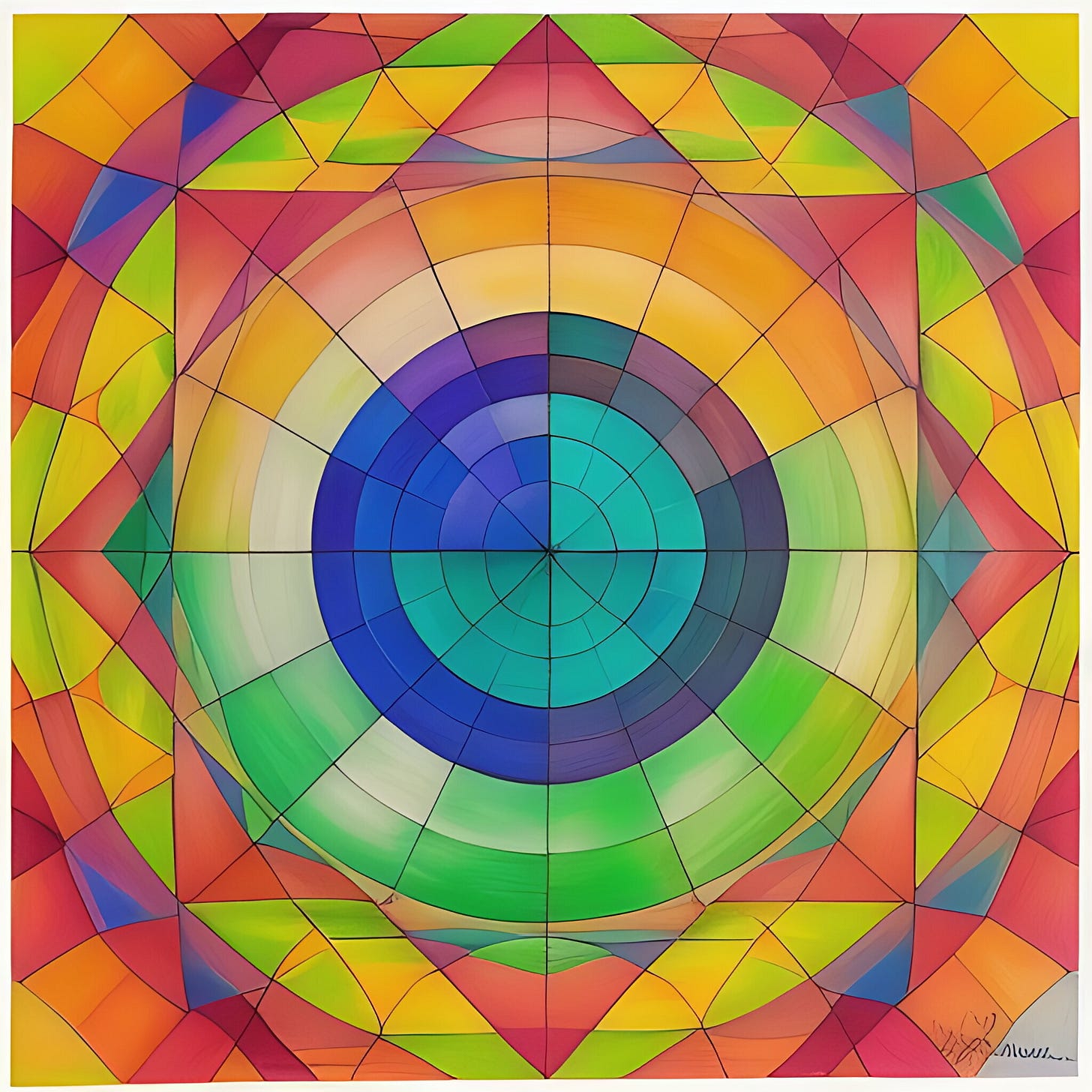
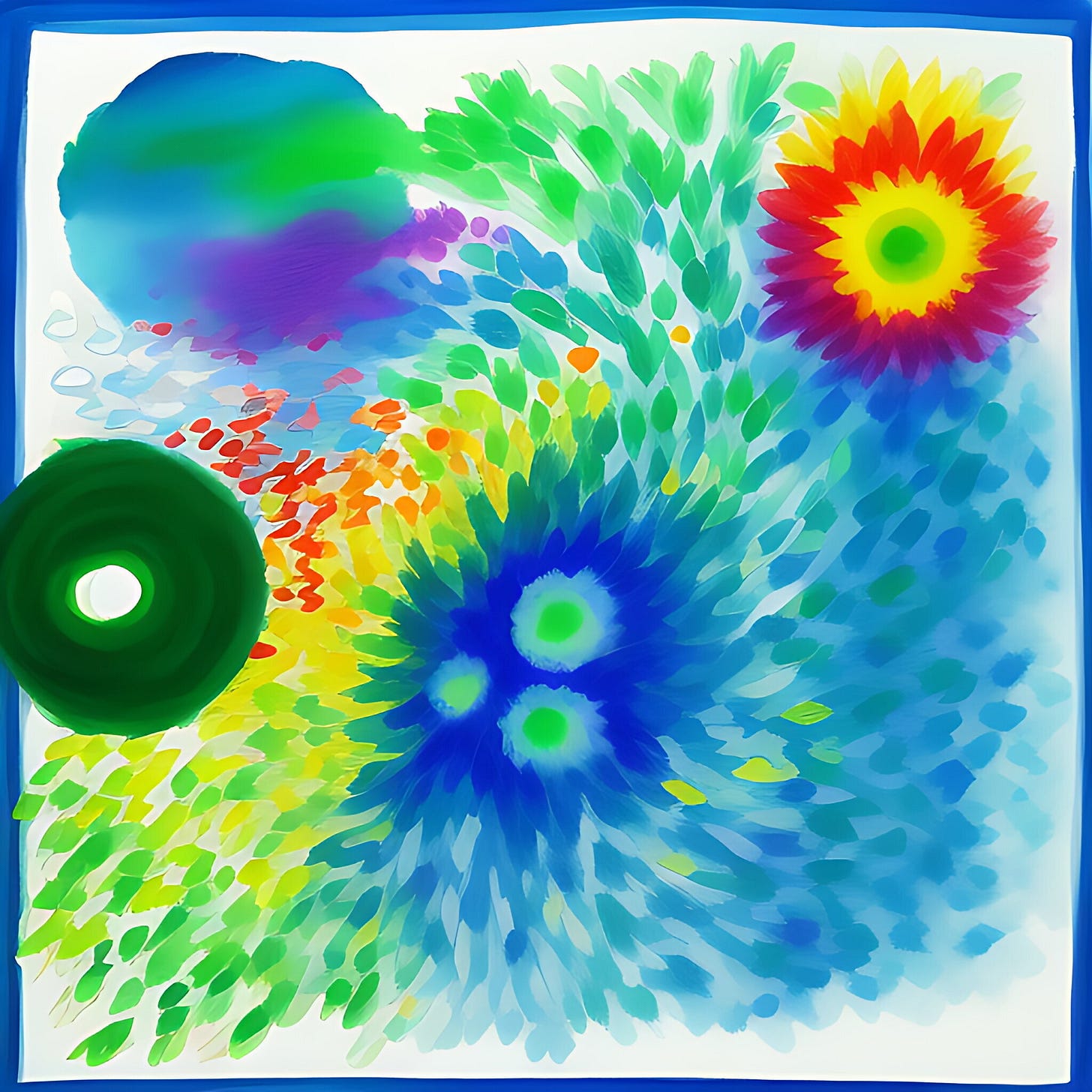

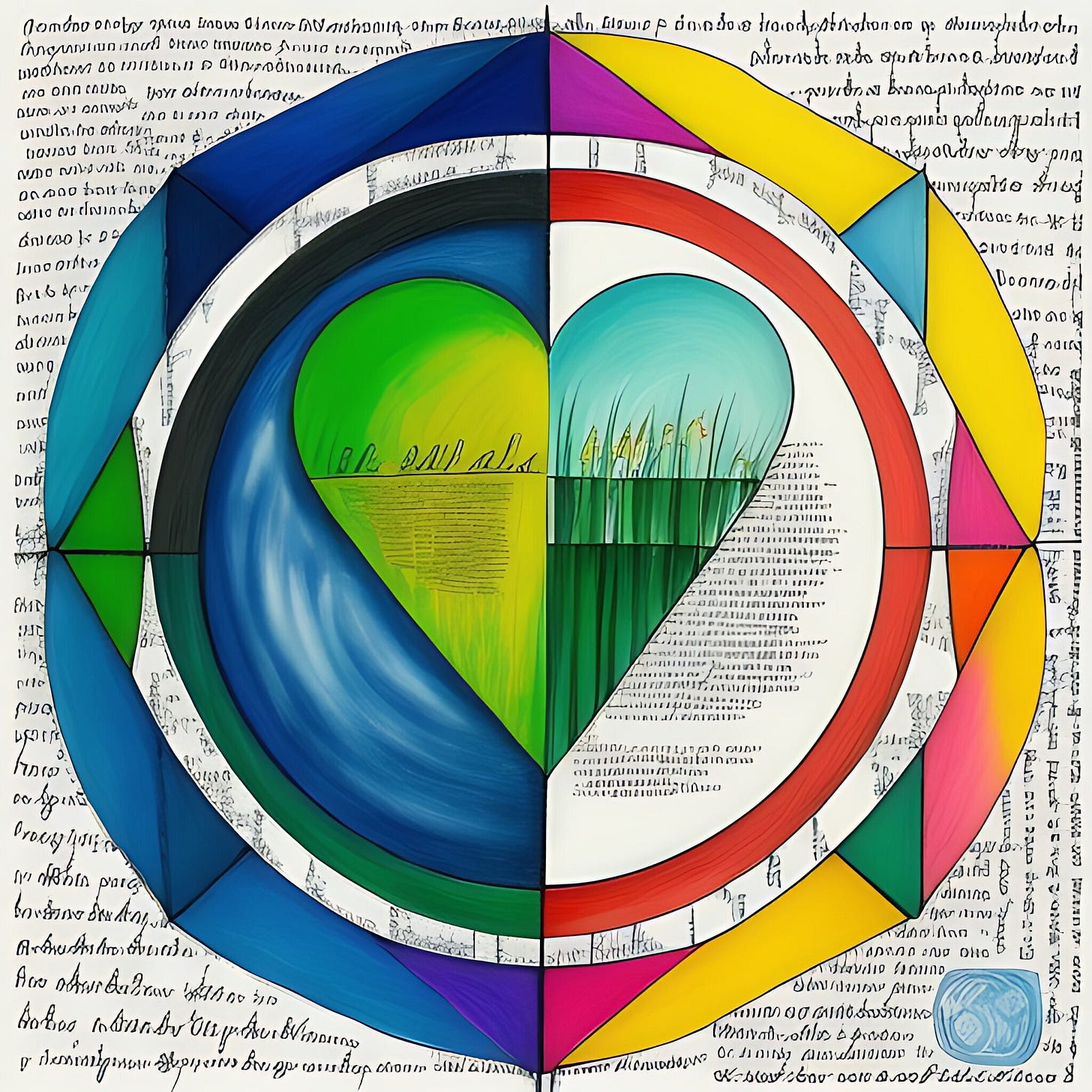


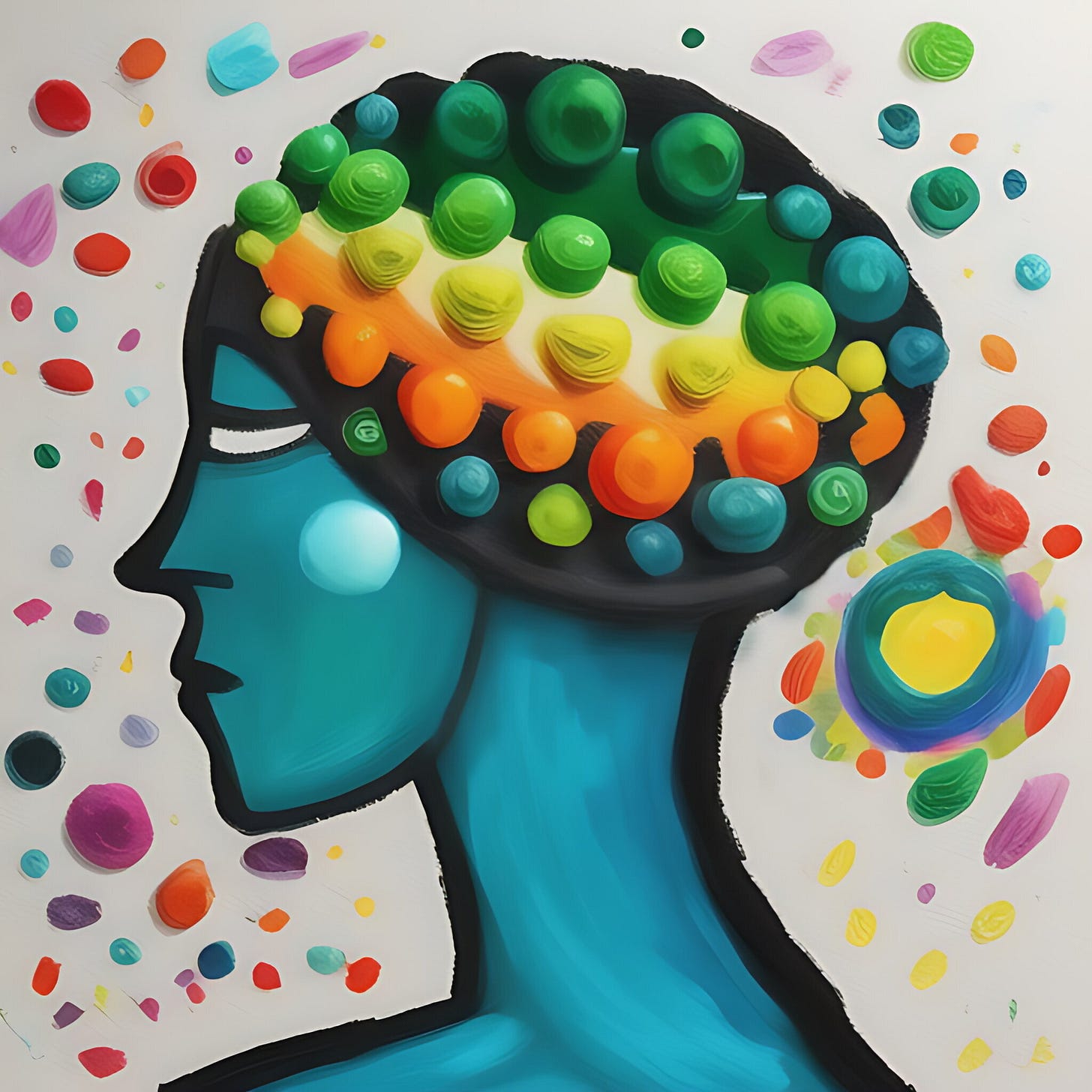


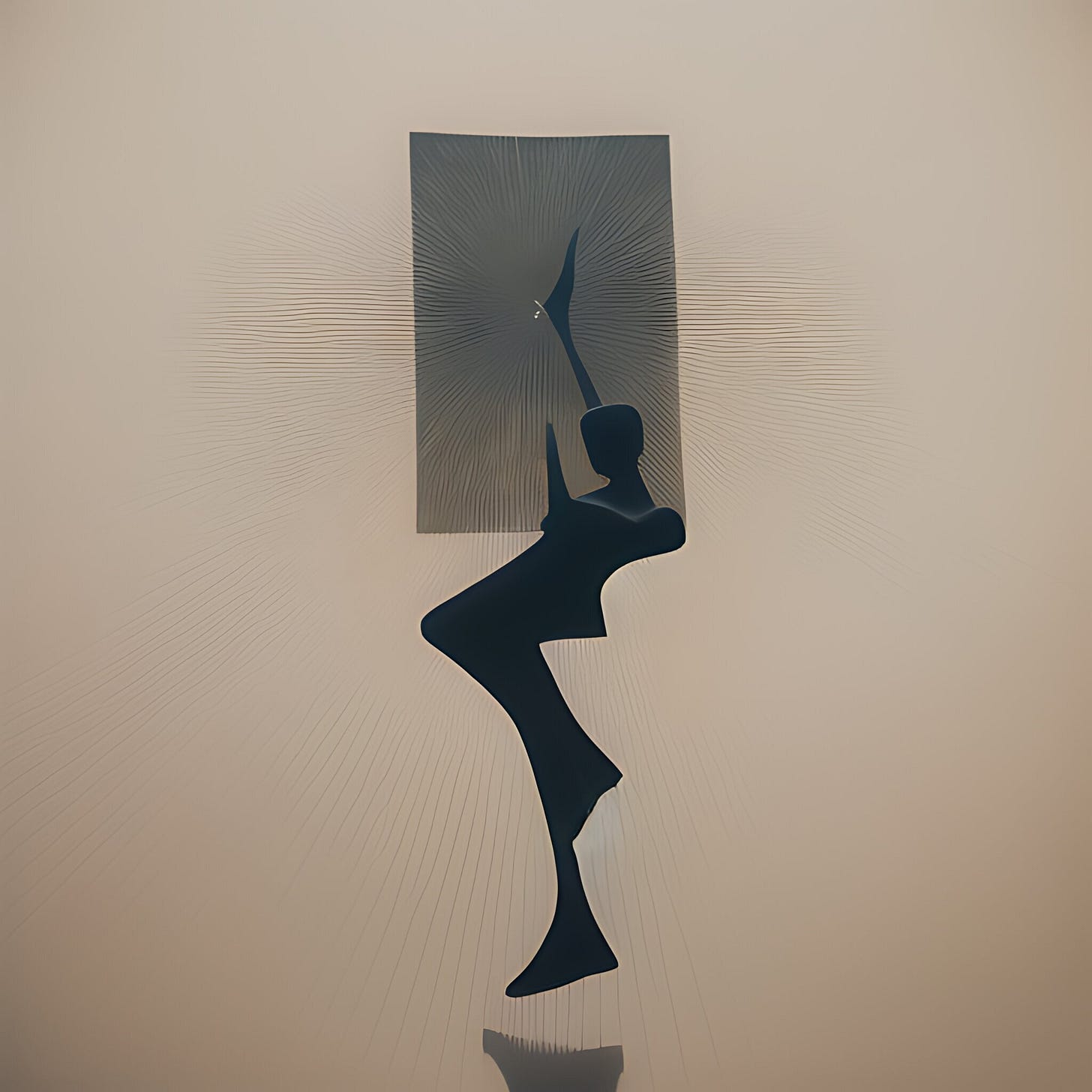
So incredible, as it always is, to see such inspiring work from writers across this Substack community. I'm happy to be included on the list again. Thank you, Kathryn for the mention and for including me in your always-very-rich digest of posts.
This is such an amazing collection of works, I'll have to dive into all these later when I have time. Thank you for the effort it took to compile these.
I am just getting started on this site. I'm journaling short notes about my artistic burnout experience and other musings while drawing an endangered species every day. Feel free to take a look if you are looking for new artists. ♥